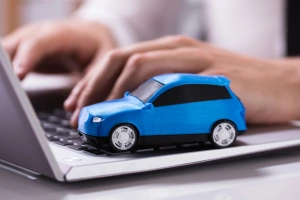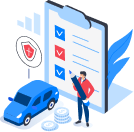Road Safety Rules in India: Rules You Must know to Ensure Safety on the Road.
Sharing the Road: Safety for Drivers, Cyclists, and Pedestrians
Road safety has always been a matter of concern all over the world, including India. Indian roads are one of the busiest in the world. Although the government is taking this problem seriously and is working on improving road infrastructure, India still stands as a country with the most road accident cases. Over-speeding is the major reason contributing to road accidents in India; other factors are breaking traffic rules, not wearing a helmet, distracted driving, drunk driving, etc. In this article, we will understand more about the issue of road safety and various measures that should be taken to control the road tragedies and ensure people's safety.
Table of Contents

What Are the Different Traffic and Road Safety Issues?
There are a number of traffic and road safety issues that persist in India contributing to high numbers of road accidents and casualties. Below are some of the most prominent issues: :
|
What is the Issue? |
How does it impact? |
|
Poor Road Conditions |
There are potholes, damaged roads, and improper signage problems that cause trouble for people. These become a potential risk, especially for two-wheeler riders and pedestrians. |
|
Traffic Congestion |
India has a huge population and the number of vehicle owners are also increasing due to which many urban areas are facing high congestion. This also leads to accidents and road fatalities. |
|
Non-Compliance of Traffic Rules |
Not following traffic rules, not wearing helmets or seatbelts, driving rashly, drinking and driving, etc. are the significant factors that lead to road accidents. Many people are not even aware about the traffic rules. |
|
Drink and Drive |
Driving under the influence of alcohol is a major cause of road accidents in India. Despite strict penalties, the problem still exists. |
|
Lack of proper infrastructure for Pedestrians and Cyclists |
Many roads lack proper sidewalks, pedestrian crossings, and dedicated cycling lanes, putting these groups at risk. |
Road Safety Measures in India: General Safety Tips
Before we jump to specific road safety measures for car drivers, cyclists, or pedestrians, let’s know about the general tips that everyone should follow to ensure safety on the road:
- Always follow traffic signals and signage. Avoiding them can put you in trouble.
- You must wear a helmet if riding a two-wheeler and a seatbelt when you are in a car. This is mandatory for both rider/driver and passengers.
- Always maintain a safe distance from other vehicles to avoid any collision.
- Never ever overspeed. Stick to the speed limits that are allowed as per traffic rules.
- Do not use mobile phones while driving. This causes distraction and leads to accidents.
For Motor Vehicle Drivers
Car Drivers:
- Always check your mirrors before merging or changing any road.
- Use indicators when turning or changing lanes.
- Regularly check your car’s brakes, tires, lights, and engine to ensure they are in proper working condition.
- Avoid driving under the influence of alcohol or drugs. It significantly impacts your driving and can cause accidents.
Bike Riders:
- You should always wear a helmet that meets safety standards. Ensure That your helmet is fastened properly.
- Stick to your lane and avoid weaving in and out of traffic.
- Wet roads can be slippery, increasing the risk of skidding. If you can;t avoid those roads, then be extra cautious.
- Wear bright-colored clothing or reflective gear, especially when riding at night.
For Cyclists
- Use designated cycling lanes, wherever they are available. If not, stay to the side of the road and ride in the direction of traffic.
- A helmet is crucial to wear even if you are a cyclist. Ensure it fits well and is properly fastened.
- While turning or stopping, give signals to others. Do not make a sudden turn.
- Try to avoid cycling on heavily trafficked roads, especially during peak hours.
For Pedestrians
- Always cross the road at designated pedestrian crossings or zebra crossings.
- Look both ways before crossing, even if the signal indicates it is your turn to cross.
- Wear bright or reflective clothing when walking at night or in low-light conditions.
- Always use footpaths and designated crossing points. Do not cross the road by breaking traffic signals.
FAQs
Q: Is there any penalty for not wearing a helmet while riding two-wheeler?
A: Yes, there is a penalty for not wearing a helmet while riding a two-wheeler under Section 194D of the Motor Vehicles Act, 2019. You can be fined up to ₹1,000 and/or your license can be suspended for up to 3 months.
Q: Are seatbelts compulsory for all passengers in a car?
A: Yes, under the Motor Vehicles Act of 1988. It is compulsory for the driver and passengers to wear seatbelts in a car.
Q: Why is it important to follow road safety measures?
A: Following road safety measures will not only secure your life but will also ensure the safety of everyone around you. It will also reduce noise pollution and help manage the traffic efficiently.
Q: I am a cyclist. Can I ride on highways in India?
A: Cyclists are generally not advised to ride on highways in India due to the lack of proper designated lanes for them and the high speed traffic on highways.














































